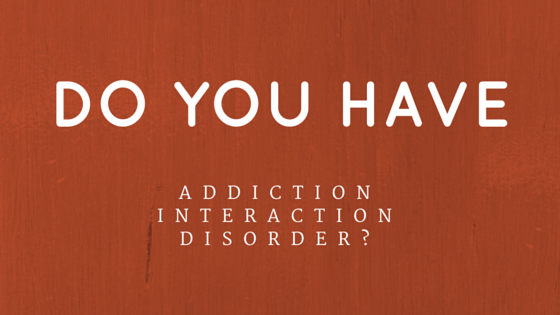
Many people with a sexual addiction also experience one or more other addictions or compulsive behaviors. And if they don’t have another addiction co-occuring with the sex addiction, the other addiction(s) can occur once the sex addiction has been stopped. These addictions can interact or replace each other, and “fuse” together. This is called Addiction Interaction Disorder (AID), and is something that every person with a possible addiction needs to be aware of.
In the words of Patrick J. Carnes, “Addictions more than coexist, they interact, reinforce, become part of one another. They become packages.”1 Thus, if a person has a sex addiction, the existence of other addictions and the risk of future addictions need to be screened. Additionally, since the addictions in an interaction disorder seem to have common causes, those causes--and not just the addictions--need to be treated. When there is AID, if multiple addictions are not included in the treatment plan and the causes of addiction are not addressed, then chances for recovery will be reduced.
There are multiple ways in which addictions can interact with each other. We’ll briefly describe a few of them.
First, they can replace one another. In this case, a person may “recover” from one addiction and replace it with another addiction, either right away, or after some time. For example, a person with a sex addiction can ostensibly recover, having healthy, monogamous sex, but replace the addiction with another addiction such as compulsive work or gambling, thus perpetuating risky and dangerous behavior.
If the replacement occurs quickly and the new addiction is participated in at high levels, this is a sign of cross-tolerance. In other words, a person has a high tolerance for one addiction, and when he starts the new addiction, his tolerance level for it is already high.
Another form of cross-tolerance is when the tolerance for two or more addictions increases at the same time. Examples of this are having an increasing number of sexual encounters while also drinking more often, or both compulsively spending more money and eating more food.
Third, addictions can mediate withdrawals. The example set forth in “Bargains With Chaos: Sex Addicts and Addiction Interaction Disorder” by Patrick Carnes, et al., is of alcoholics smoking at Alcoholics Anonymous meetings.2 The cigarettes ease the pain of alcohol withdrawal, but are still an addiction and still constitute a health risk.
Fourth, addictions can “fuse” or become dependent on each other to create the necessary reward. Fusion describes when addictions are engaged in at the same time. Examples would be when a person always drinks when he gambles, but never drinks or gambles without doing the other, or when he smokes while compulsively shopping online. Says Carnes, “Neither addiction separately is sufficient: only simultaneous use suffices.”2
There are other ways in which addictions can interact, but those presented above give an idea of the importance of addressing Addiction Interaction Disorder in any therapy program. As can be seen, a person seeking to overcome sex addiction will be best served when screened for multiple addictions and for the risk of future addictions. The results of the screening should then be included in a comprehensive treatment plan that addresses (1) all the client’s addictions, and (2) the causes of those addictions.
Paradise Creek screens for AID and when indicated, incorporates the screening’s results into its treatment plans. You can call Paradise Creek at (855) 442-1912 for more information.
1Carnes, Patrick J., PhD. “Addiction Interaction Disorder: Understanding Multiple Addictions.” http://www.iitap.com/images/Addiction_Interaction_Disorder101.ppt. Power Point file.
2Carnes, Patrick, Robert Murray, Louis Charpentier. “Bargains With Chaos: Sex Addicts and Addiction Interaction Disorder.” Sexual Addiction & Compulsivity, 12:79–120, 2005.
